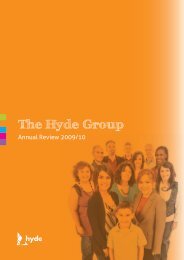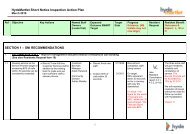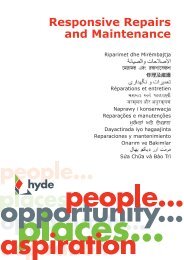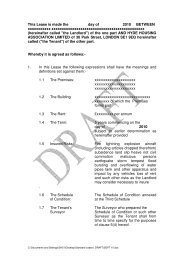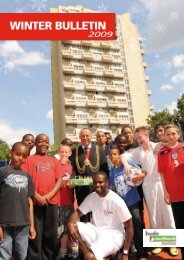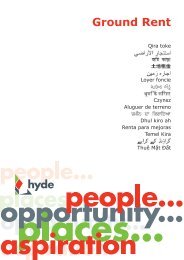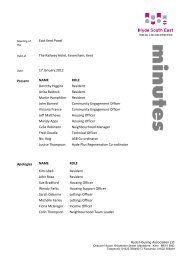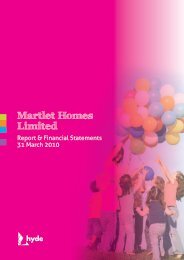Resident involvement - Hyde Housing Association
Resident involvement - Hyde Housing Association
Resident involvement - Hyde Housing Association
You also want an ePaper? Increase the reach of your titles
YUMPU automatically turns print PDFs into web optimized ePapers that Google loves.
<strong>Resident</strong> <strong>involvement</strong> in social housing in the UK and Europe<br />
was recognised that this required that Panel members ‘feel ...able to ask<br />
important and possibly challenging questions [of staff]’. Training and coaching<br />
were made available to develop this capacity. RSPs meet quarterly. RSPs were<br />
also seen as a key interface between residents in a given area and the<br />
organisation’s relevant Regional Manager.<br />
At E2, popular <strong>involvement</strong> in regional decision-making was also facilitated by<br />
resident membership of Divisional Boards descended from the governing<br />
bodies of the organisations from which the group had been assembled and<br />
which formerly existed as autonomous subsidiaries.<br />
<strong>Resident</strong> <strong>involvement</strong> structures at all three English case study organisations<br />
also included function-specific working groups or panels. At E1, for example,<br />
there were six group-wide service improvement groups (SIGs) of residents.<br />
These covered estate services, property services, leasehold services, customer<br />
services, supported housing, and anti-social behaviour. At the same level were<br />
two other resident groups, the diversity panel covering the six main equalities<br />
strands, and the disability forum. Under E2’s slightly different model, residentchaired<br />
Issues and Business Groups existed as sub-committees of the overall<br />
tenants’ and residents’ federation. These brought together managerial staff and<br />
residents to inform the federation’s thinking on matters such as repairs,<br />
customer services and service quality.<br />
In the other case study countries, resident <strong>involvement</strong> at sub-organisational<br />
level mainly revolved around local housing organisation boards (in Denmark)<br />
and estate-level residents associations (in Belgium and the Netherlands).<br />
3.4 Chapter summary<br />
Governing body resident membership is the main structural vehicle for resident<br />
<strong>involvement</strong> in Denmark, where resident-controlled housing is the norm.<br />
Minority resident representation on main boards of English and Dutch housing<br />
associations is also typical (although not universal in England). While a Dutch<br />
landlord must, by law, designate resident seats on its supervisory board<br />
nominees cannot be tenants of the association concerned.<br />
As a crucial component within the broader architecture of resident <strong>involvement</strong>,<br />
case study landlords typically attached more significance to organisation-wide<br />
tenant councils, panels or advisory boards or customer services committees<br />
than to main board resident membership. Such forums, set up to input a<br />
resident perspective to corporate decision-making, were found in Belgium,<br />
England and the Netherlands.<br />
31



